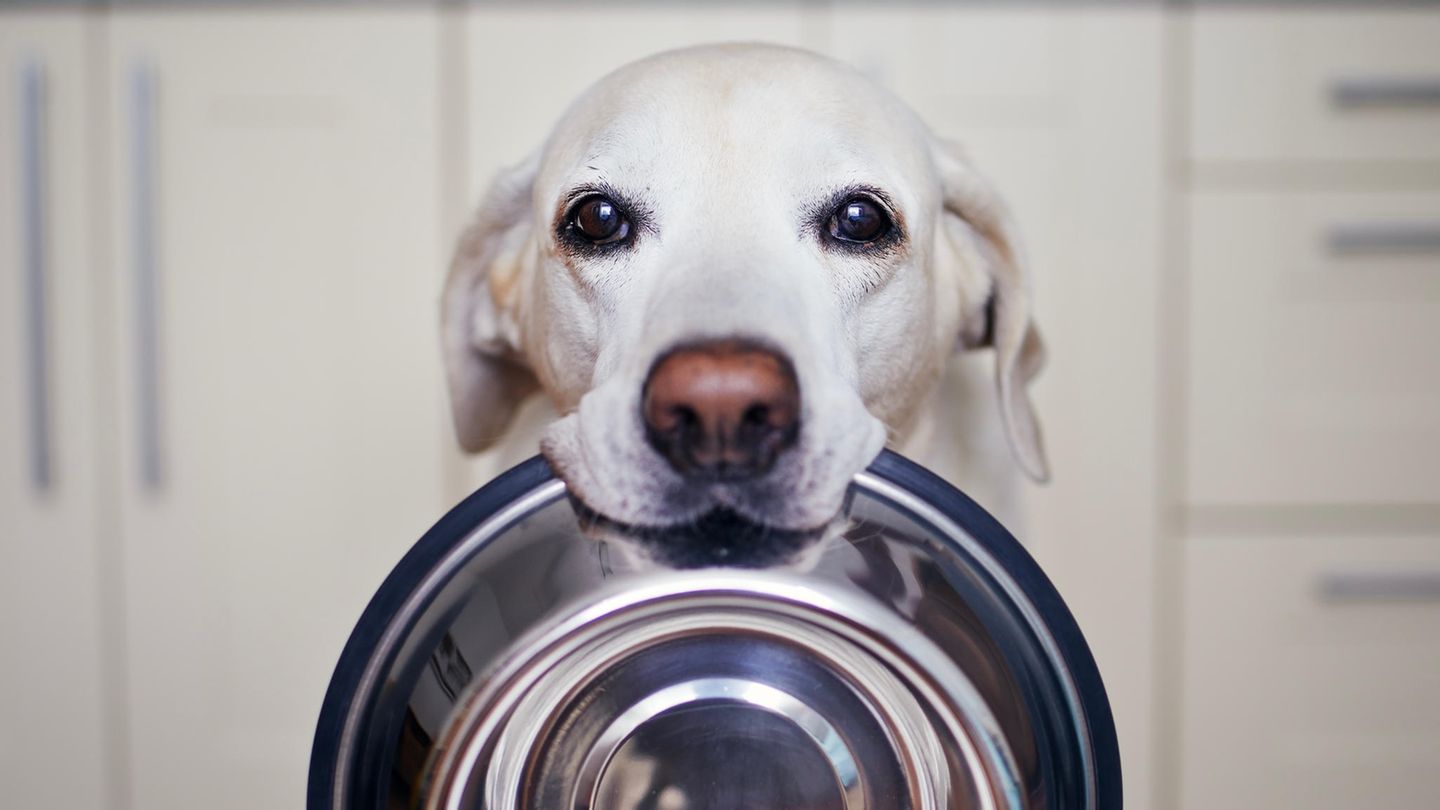At every meal, people use clean dishes. But when it comes to the four-legged friend’s dog bowl, dog owners often don’t take hygiene very seriously. These are the treasure troves for germs – and thus a health risk.
Mistress and master ensure that the feeding bowl of the four-legged best friend is full. However, a few wrong moves are enough to turn the feeding bowls into bacteria slingshots and a danger to humans and animals. Salmonella and E.coli bacteria, among others, can be transmitted via these. A study now published in the journal PLOS ONE took a closer look at dog owner habits that promote cross-contamination.
Where is the feed for Hasso and Co stored? How is it prepared? And how often the bowl cleaned? In order to clarify these and other questions, the US research group asked 417 dog owners about their feeding habits. It turned out that the majority, almost 95 percent, had no idea about the hygiene recommendations of the US health authority FDA. These include carefully covering up leftover food and cleaning the bowls after each meal. The study authors write that it can have health effects for both humans and dogs if a feeding bowl is microbiologically contaminated. They report several outbreaks of disease, triggered by pathogens in the feed – with people with weak immune systems and children therefore having an increased risk of becoming ill.
Raw dog food, among other things, is susceptible to contamination. An investigation by the Lower Saxony State Office for Consumer Protection and Food Safety (LAVES) between February 2018 and June 2020 found no enterobacteria in only eight of 65 samples of such feed, and in around 40 percent the finds were sometimes well above the maximum permitted values. These can cause intestinal diseases. At that time, contamination with listeria (Listeria monocytogenes) was also detected in 20 samples. This can cause listeriosis in both humans and animals, which can be life-threatening for immunocompromised people.
Dog bowl is rarely cleaned
The hygiene factor plays an important role in contamination. Because with this it seems human, the survey suggests, not to be too precise. Just a quarter of those surveyed stated that they actually adhered to the instructions to clean their hands and bowl regularly. But: Just about a third (34 percent) of the owners thought of washing their hands after processing the dog food, and even fewer (25 percent) washed them beforehand. And the bowls, they were cleaned even less often. Because almost every fifth dog owner (18 percent) thinks this is unnecessary, cleans them less than once a quarter or not at all. 22 percent clean the bowls at least once a week, only 12 percent daily.
This is unappetizing because studies over the past 15 years have shown that pet bowls are among the most contaminated items in the home. The bacterial load is therefore sometimes comparable to that in toilets. In addition, a third of those surveyed (33 percent) prepare their food on surfaces they also use to process their own food, or at least in the same room, and also keep the food in close proximity to their own food, contrary to recommendations – and often not properly sealed. Both increase the risk of contamination.

Dog owners unreasonable
But what impact does this have on germs? To find out, the researchers conducted another small experiment with 50 dog owners, in which the dog bowls were checked for contamination before and after. For the eight-day experiment, the participants were divided into three groups. Group A had to comply with FDA pet feeding guidelines during this time. Group B was also required to follow human food handling guidelines. Group C fed as usual.
There was little surprise when, after completing the experiment, the researchers found that the measures in groups A and B led to a significant reduction in contamination. In bowls that were cleaned with hot water or in the dishwasher, the bacterial count fell by 90 to 99 percent compared to those that were only cleaned with cold or lukewarm water. What was more surprising, however, was the reaction of the dog owners, because despite the results, only a lousy eight percent of those surveyed said they wanted to continue to adhere to the recommended hygiene guidelines in the future.
Source: , ,
Source: Stern



